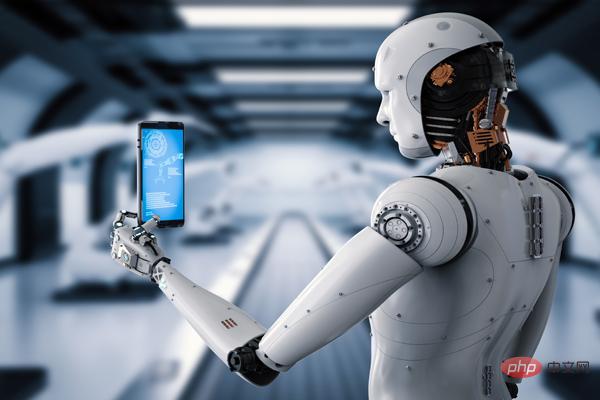Home >Technology peripherals >AI >International Federation of Robotics: Five major trends in robot development in 2022
International Federation of Robotics: Five major trends in robot development in 2022
- 王林forward
- 2023-04-08 15:01:031787browse
The number of industrial robots in operation worldwide has reached a record high of 3 million units - an average annual growth of 13% (2015-2020). The International Federation of Robotics (IFR) analyzed the five major trends affecting the development of robotics and automation on a global scale.

"In traditional and emerging industries, the transformation of robotic automation is accelerating. More and more companies are gradually realizing that robotics technology is their business Brings many advantages." said IFR Chairman Milton Guerry.
1 Robot Applications in Emerging Industries
Fields with low levels of automation are rapidly adopting robots. Consumer behavior is driving companies to personalize products and install thousands of robots, an area where there were no robots deployed at all five years ago.
To address labor shortages, companies that have not previously considered automation will reconsider this option. Businesses that rely on service workers, such as retail and restaurants, are unable to fill staff vacancies. Therefore, we can expect to see them investing in automation to meet the needs of their customers. Relatively new areas of robotics application, such as distribution and logistics, construction, agriculture and other fields, will also benefit from advancing automation technology.
2 Easier-to-use robots
Deploying robots can be a complex task, but a new generation of robots will be easier to use. There is a clear trend towards new user interfaces that allow for simple icon-driven programming and manual guidance of robots.
Some robotics companies and third-party vendors are bundling hardware packages with software to make implementation easier. This trend may seem simple, but focusing on products with a complete ecosystem greatly increases value by reducing investment and operation time.
The trend in low-cost robotics also includes ease of setup and installation, which in some cases can be pre-configured for specific applications. Suppliers provide standard programs for adapting grippers, sensors and controllers. The App Store provides program routines for various applications and supports the deployment of low-cost robots.
3 Upgrading the skills of robots and employees
More and more governments, industry associations and enterprises believe that it is necessary to prepare the next generation workforce as early as possible Provide basic robotics and automation education. Data-driven production lines require enhanced education and training.
In addition to internal training for employees, external educational avenues can enhance employee learning programs. Robot manufacturers receive 10,000 to 30,000 registered students every year in robotics courses held in more than 30 countries.
Robotics technology is improving the careers of factory workers. As the recent “resignation wave” shows, people want to start their careers working in a modern environment. The new training opportunities brought about by robotics are a win-win strategy for companies and employees: boring, dirty and dangerous tasks are automated by robots, giving people the opportunity to learn key skills for the jobs of the future. , and increase your earning potential throughout your career.
4 Robots provide guarantee for production
The deterioration of the global trade environment and the COVID-19 epidemic are driving the return of manufacturing and getting closer to consumers. Supply chain issues are prompting businesses to consider automation solutions. A statistic from the United States shows how automation is helping companies return to the market: According to data from the American Advanced Automation Association (A3), robot orders in the United States in the third quarter of 2021 increased by 35% compared with the same period in 2020. More than half of the orders come from non-automotive industries.
This record growth is not limited to robotics, with machine vision, motion control and motors also seeing significant growth. IFR Secretary General Dr Susanne Bieller said: “The pandemic, and the resulting disruption to supply chains and labor supply, appears to be the push many people need to justify investment. The companies most likely to invest in automation are those that have already considered it Companies that have been around for a while, but haven’t taken the final step yet.”
5 Robots Enable Digital Automation
In 2022 and beyond, we think Data will be seen as a key enabler of the future of manufacturing. Data collected from intelligent automation processes will be analyzed by producers to make more informed decisions. Because robots can share tasks and learn through artificial intelligence (AI), companies can also more easily adopt intelligent automation in new environments, from buildings to food and beverage packaging facilities to medical laboratories.
AI used for robots is becoming more and more mature, and learning robots are becoming mainstream. The industry has moved beyond the pilot phase and expects larger-scale deployment of these technologies in 2023.
The above is the detailed content of International Federation of Robotics: Five major trends in robot development in 2022. For more information, please follow other related articles on the PHP Chinese website!
Related articles
See more- Technology trends to watch in 2023
- How Artificial Intelligence is Bringing New Everyday Work to Data Center Teams
- Can artificial intelligence or automation solve the problem of low energy efficiency in buildings?
- OpenAI co-founder interviewed by Huang Renxun: GPT-4's reasoning capabilities have not yet reached expectations
- Microsoft's Bing surpasses Google in search traffic thanks to OpenAI technology

